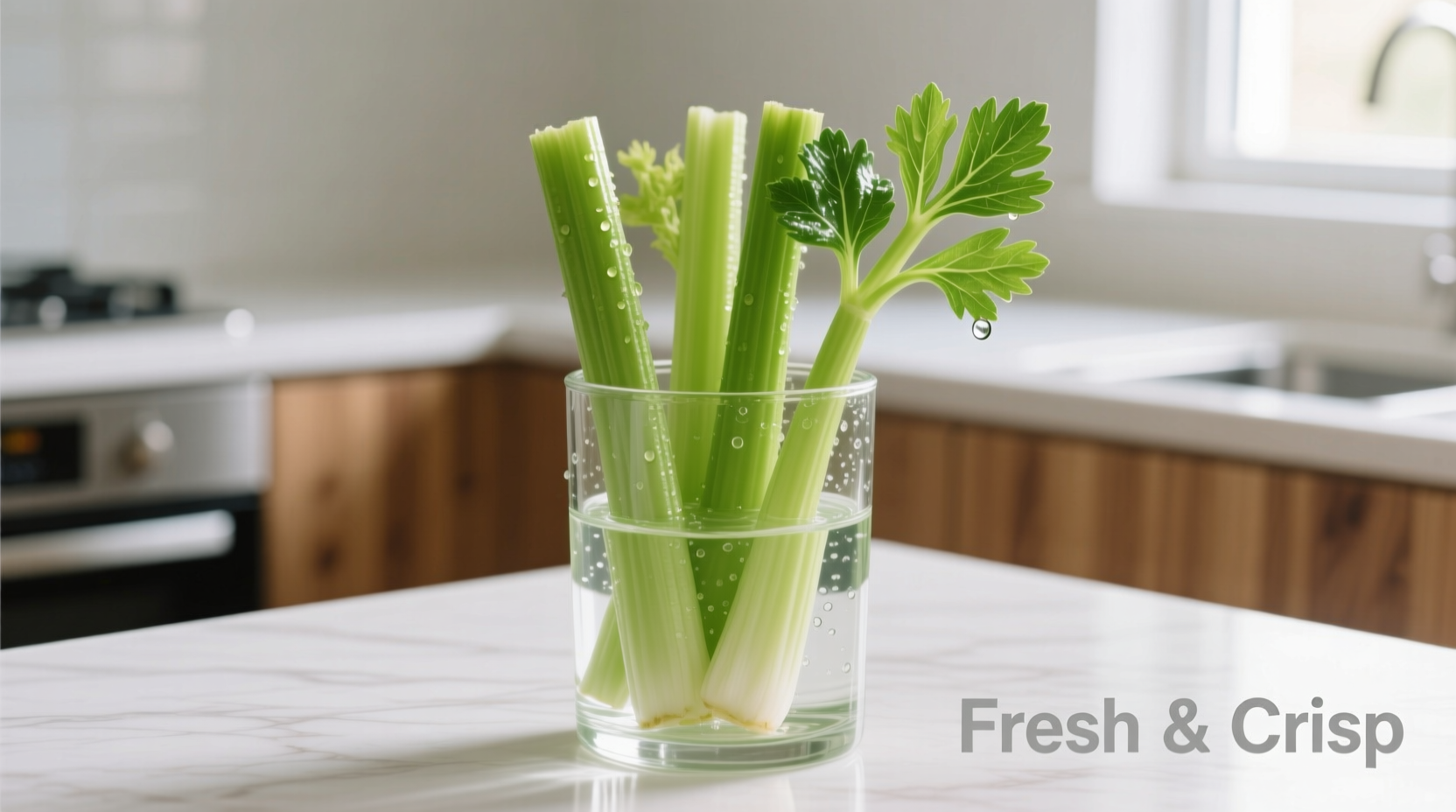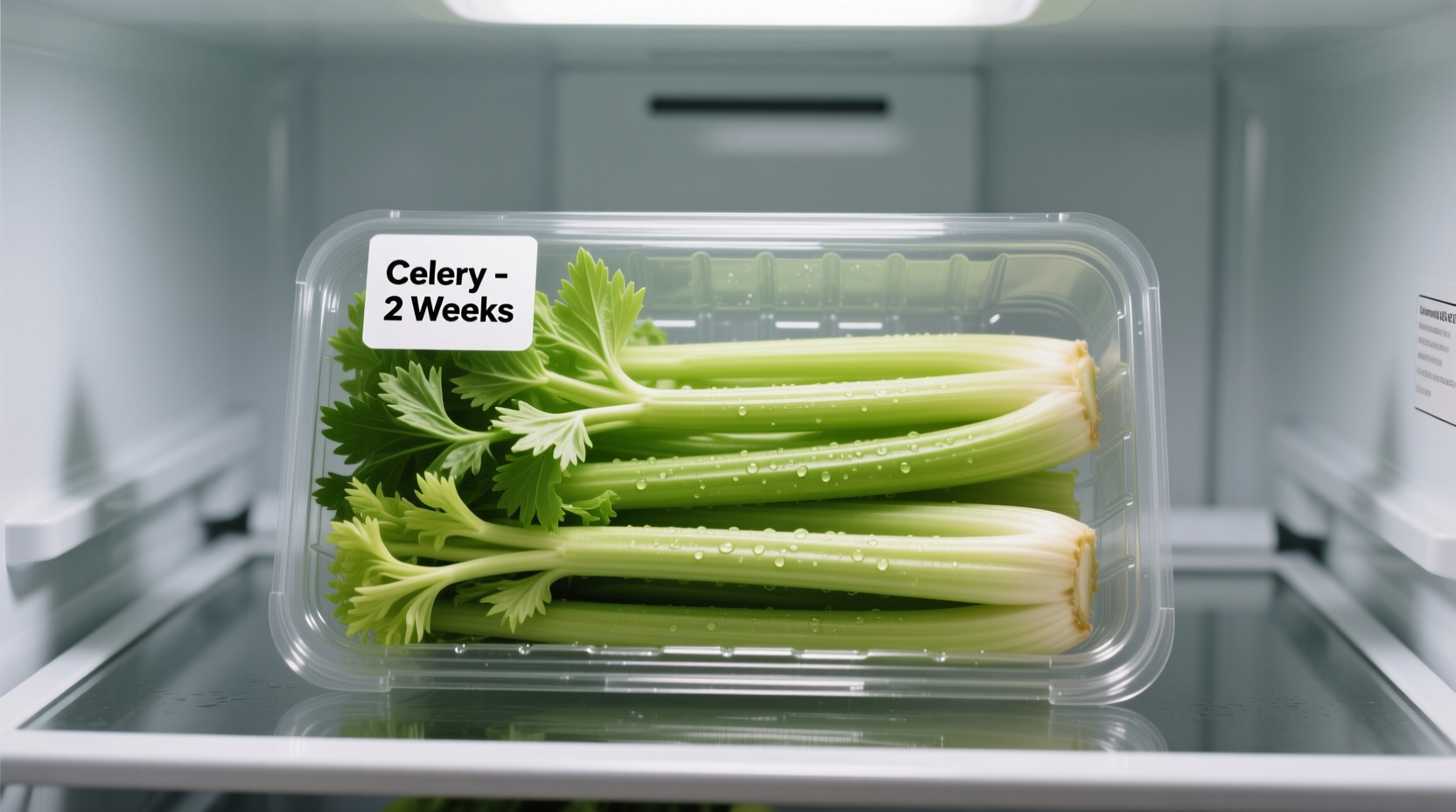Discover exactly how to maximize your celery's freshness, recognize spoilage signs before they become dangerous, and implement storage methods backed by food science research. This guide delivers actionable strategies that go beyond basic refrigerator storage to help you reduce food waste and maintain crisp, flavorful celery for weeks.
Understanding Celery's Natural Shelf Life
Celery's longevity depends on multiple factors including initial freshness, storage method, and refrigerator conditions. Unlike many vegetables, celery continues metabolic processes after harvest that accelerate deterioration when exposed to air and improper temperatures.
| Storage Method | Expected Freshness Duration | Texture Preservation | Flavor Retention |
|---|---|---|---|
| Original plastic packaging | 1-2 weeks | Moderate (becomes limp) | Good initially, fades quickly |
| Aluminum foil wrapping | 2-3 weeks | Good | Excellent |
| Water submersion method | 3-5 weeks | Excellent | Very good |
| Vacuum sealed | 4-5 weeks | Exceptional | Excellent |
Optimal Refrigeration Conditions for Maximum Freshness
Your refrigerator's crisper drawer provides the ideal environment for celery storage, but specific adjustments significantly extend shelf life. The USDA Food Safety and Inspection Service recommends maintaining refrigerator temperatures at or below 40°F (4°C) for all perishable foods, including vegetables like celery (FSIS, 2023).
For celery specifically, research from the University of California Davis Postharvest Technology Center shows that maintaining 95-100% relative humidity prevents moisture loss that causes limpness. This explains why the water submersion method outperforms dry storage techniques.

Step-by-Step Storage Methods That Work
Water Submersion Technique (Most Effective)
- Cut celery ends and separate stalks
- Place stalks upright in container with 1-2 inches of water
- Cover loosely with plastic bag
- Change water every 3-4 days
- Store in crisper drawer away from ethylene-producing fruits
Aluminum Foil Method (Convenient Alternative)
Wrap celery tightly in aluminum foil, which allows ethylene gas to escape while maintaining humidity. This method prevents the condensation that occurs with plastic bags, which accelerates spoilage.
Recognizing Spoilage: When to Discard Celery
Understanding the progression of celery deterioration helps prevent foodborne illness. The FDA Food Code identifies three critical stages of vegetable spoilage (FDA, 2022):
- Stage 1 (Edible): Slight limpness that revives in water
- Stage 2 (Use Immediately): Significant limpness, minor discoloration
- Stage 3 (Discard): Slimy texture, strong odor, visible mold
Never consume celery showing brown or black spots with soft texture, as these indicate bacterial growth that cooking cannot eliminate. The Cornell University Food Safety Lab confirms that pathogens like Listeria can thrive in refrigerated vegetables (Cornell, 2024).
Reviving Slightly Wilted Celery
If your celery has begun to soften but shows no signs of spoilage, try these revival methods:
- Submerge in ice water for 30-60 minutes
- Add a tablespoon of vinegar to the water for better results
- Store upright in fresh water until crispness returns
Advanced Tips for Professional Results
Chef Antonio Rodriguez, with 15 years of culinary experience, recommends these professional techniques:
"Always store celery away from ethylene-producing fruits like apples and bananas. The gas they emit accelerates celery's deterioration. I also suggest removing leaves before storage, as they draw moisture from the stalks."
For meal preppers, consider freezing celery for cooking applications. While frozen celery loses crispness, it maintains flavor for soups and stocks for 12-18 months when properly packaged.











 浙公网安备
33010002000092号
浙公网安备
33010002000092号 浙B2-20120091-4
浙B2-20120091-4